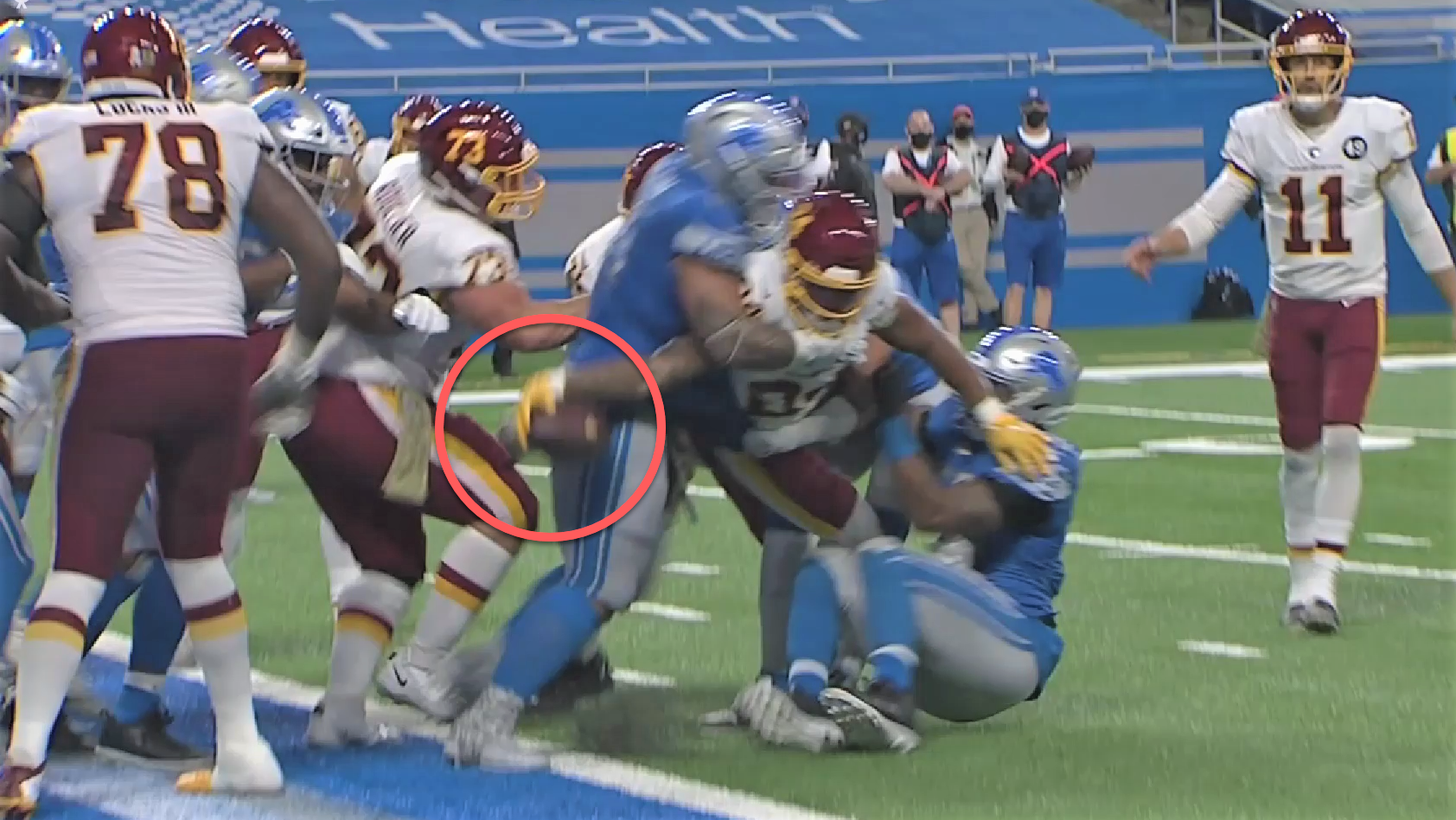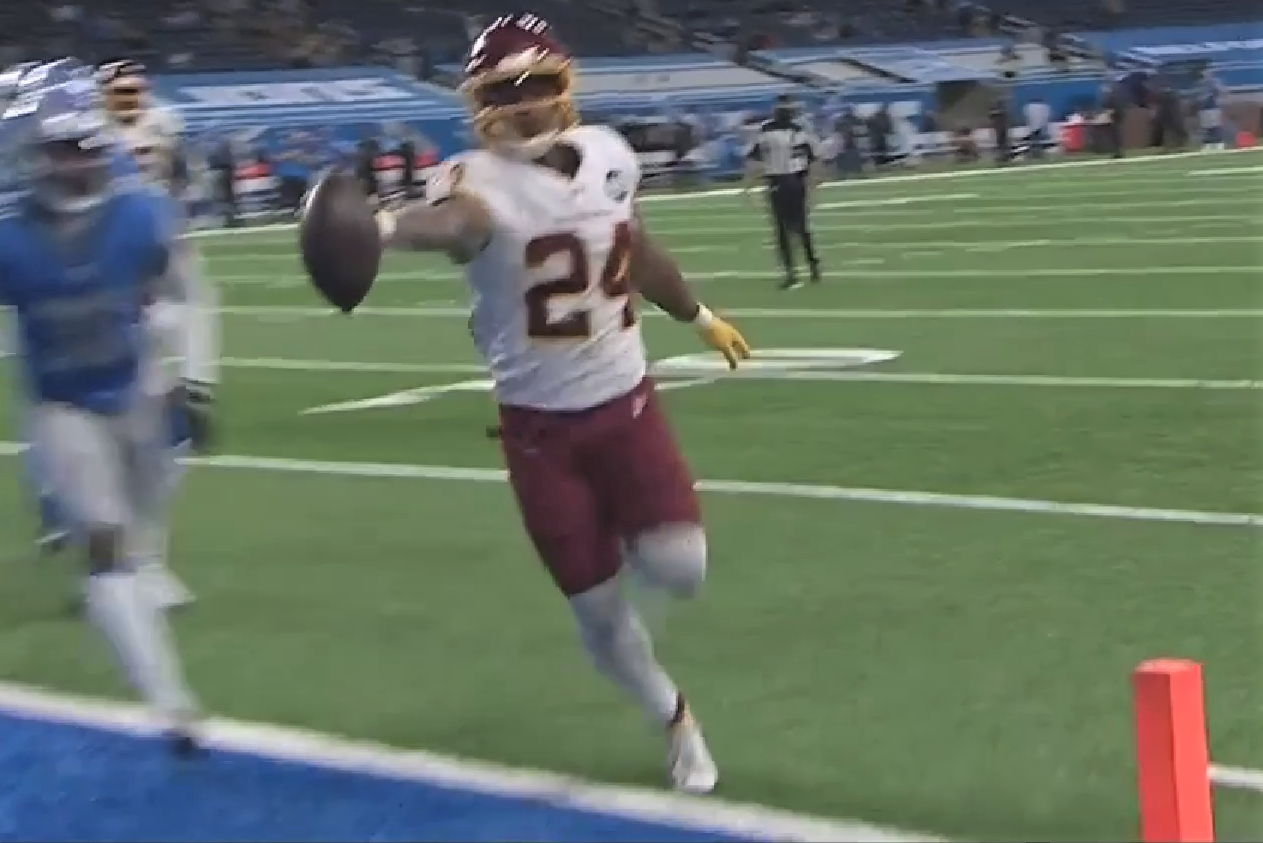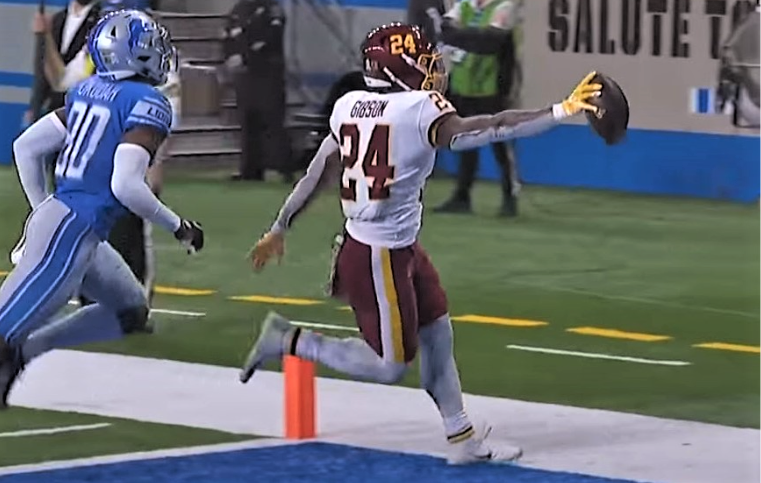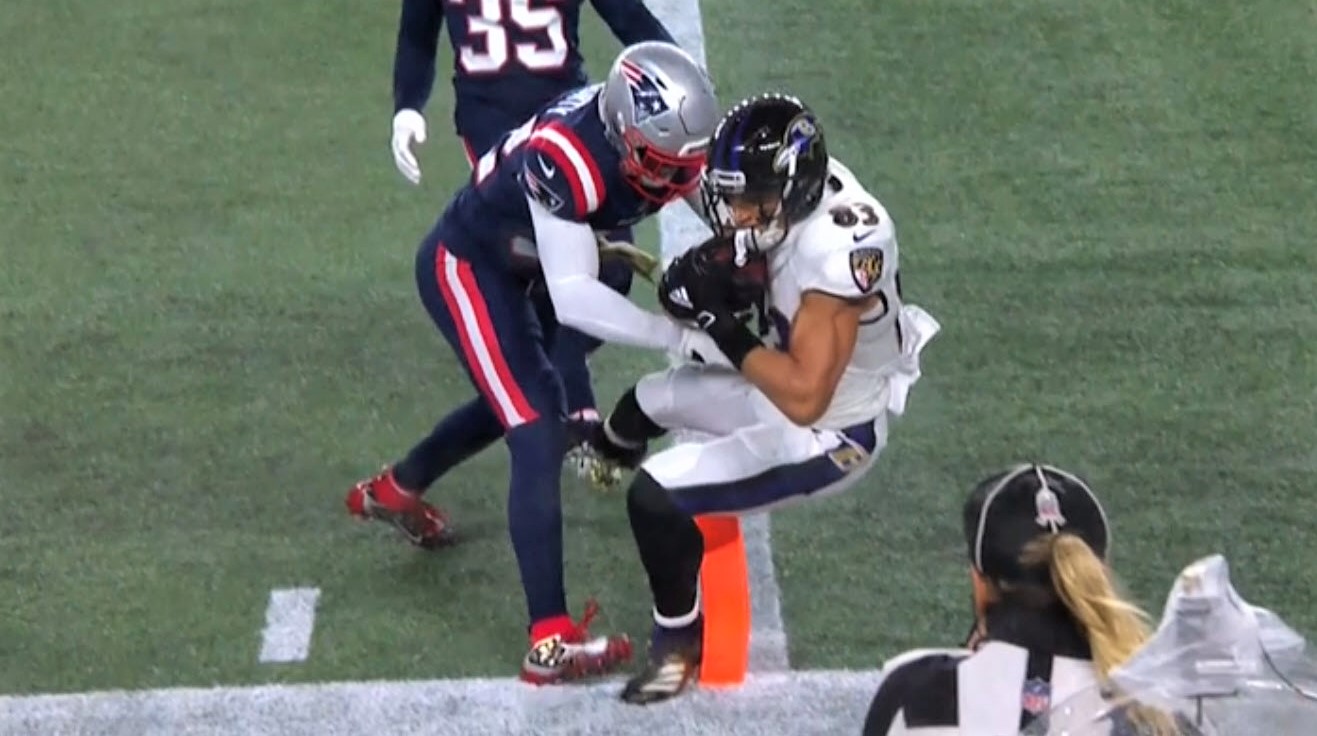14 Games, Nov. 12/13/16, 2020
Week 10: 70 touchdowns, 3 ATDs
WAS@DET: Reaching, waving…scoring?
Washington’s Antonio Gibson gets stoned at the line, knocked backwards to the 3 and gets rewarded with six points for his trouble. We just shake our heads and wonder how sensible people can call this a touchdown.
Gibson’s feet might get inside the 1, but they’re never close to touching the goal line. But, despite his rookie status, Gibson pulls a veteran move: with his feet on the 1, he briefly extends the ball into the end zone’s airspace, and that momentary reach immediately negates all the work three Detroit defenders have put into keeping him out of the end zone.
It’s an instant airspace touchdown. Does that seem fair? Hocus Bogus rating: 5

Video and image: Fox Sports
WAS@DET: Reaching, waving, scoring 2
Antonio Gibson’s second touchdown of the fourth quarter mimics his first TD (above) in that he does not make contact with the end zone on either play.
Earlier he was stuffed at the line of scrimmage. Here he runs wide left and, to avoid tacklers, he cuts the corner of the end zone, stepping in front of the goal line with his right foot, then landing on his left foot partially out of bounds.
Our belief is a ball carrier should be obligated to make fully in-bounds contact with the end zone in order to be credited with a touchdown. Gibson is close, really close, to catching the goal line with his right foot. Just a little toe on the line would be good enough for us. Alas, not on this play. Rating: 4
Video and images: Fox Sports


BAL@NE: Backwards thinking
Even devotees of the airspace touchdown might wonder how this play was ruled to be worth six points.
Baltimore’s Willie Snead IV runs wide to the right pylon and appears to get pushed out of bounds just before the goal line by Patriots’ safety Devin McCourty (32). Snead’s forefoot lands out of bounds while his off-the-ground heel contacts the pylon. (See below.) The end zone remains untouched.
Yet this is ruled a touchdown. In real-time, was it evident that the ball had broken the Great Invisible Plane? Apparently so, since the down judge did not hesitate to signal a score.
It’s our belief that referees, who have to make some tough judgment calls in a blink of time, now tend to always signal a TD and then let the replay booth sort it out. But even when applying the break-the-plane rule, we think it’s hard to claim this is a touchdown. Rating: 5

Video and image: NBC Sports
